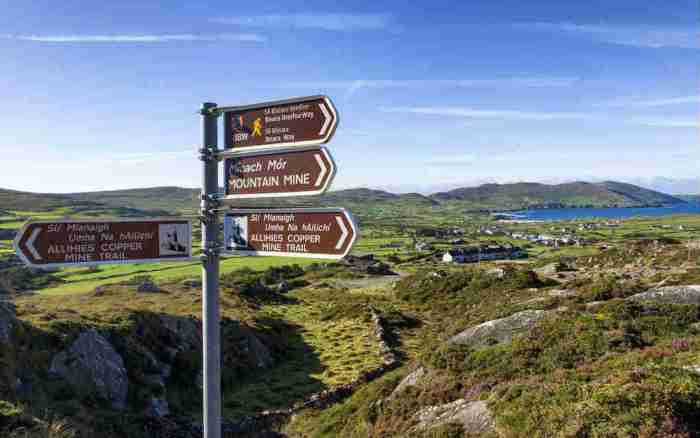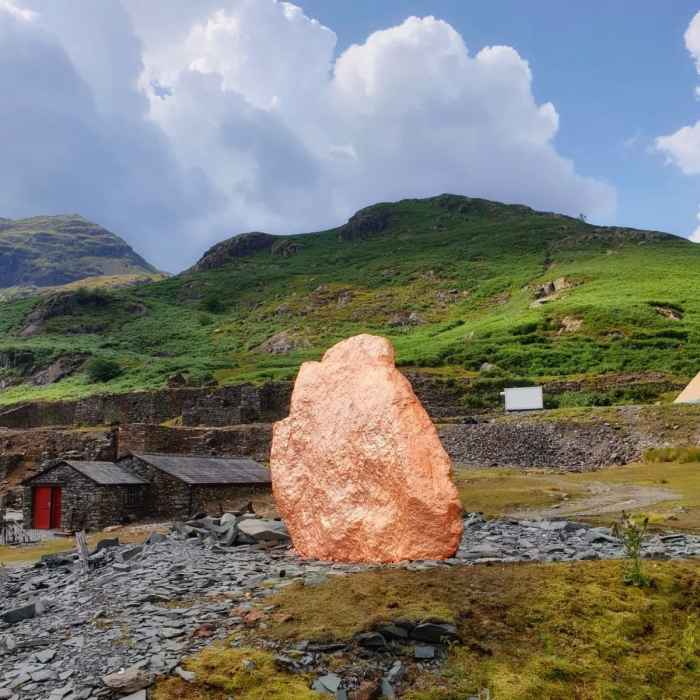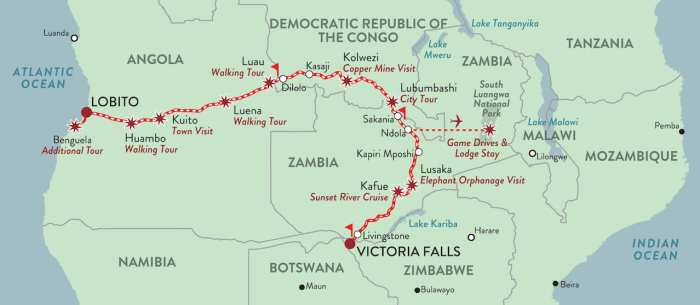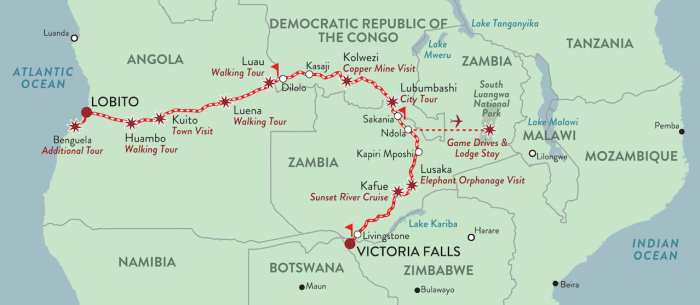Picture this: a wave of Irish immigrants, driven by famine and yearning for a better life, braving the treacherous journey across the Atlantic to reach the untamed frontier of Montana. This is the story of The Copper Trail, a journey that tested the limits of human resilience and forged a new chapter in the history of the American West.
This epic tale unfolds against a backdrop of hardship, cultural clash, and the enduring spirit of the Irish people. We’ll delve into the motivations behind this mass migration, the grueling challenges they faced, and the lasting impact their journey had on both Montana’s landscape and its cultural identity.
Historical Context and Inspiration

The Copper Trail: A Journey of Survival from Ireland to Montana draws inspiration from the powerful and enduring story of Irish emigration to the United States, particularly during the 19th century. This period witnessed a mass exodus of Irish people seeking a better life, driven by a confluence of factors that transformed their homeland and reshaped the American landscape.
Motivations for Emigration
The Irish migration to America was a response to a series of profound challenges that gripped Ireland in the 19th century. The most significant factor was the Great Famine, a period of widespread starvation and death caused by potato blight between 1845 and 1852.
The potato, a staple food for millions of Irish people, was decimated by the blight, leading to widespread famine and death. This catastrophic event drove countless Irish people to seek refuge and sustenance in America.Beyond the famine, other factors also contributed to the emigration wave.
Poverty, limited economic opportunities, and political oppression in Ireland fueled the desire for a fresh start in the United States. Many Irish immigrants were drawn to the promise of land ownership, better wages, and the opportunity to escape the social and political constraints of their homeland.
Challenges Faced by Irish Immigrants in Montana
The journey to Montana, a rugged and unforgiving territory, presented a unique set of challenges for Irish immigrants. The harsh climate, isolated landscapes, and unfamiliar terrain tested their resilience and adaptability. Cultural differences, language barriers, and prejudice from established communities further complicated their experiences.Montana’s frontier environment demanded hard work and resourcefulness.
Irish immigrants often found themselves working in demanding and dangerous jobs, such as mining, logging, and farming. They faced harsh conditions, long hours, and limited access to basic necessities.
“The life of a miner in Montana was hard and dangerous. It was a life of constant struggle against the elements, the dangers of the mine, and the prejudice of some of the local residents.”
John O’Brien, Irish immigrant who worked in the Montana mines
Stories of Resilience and Determination
Despite the hardships they faced, Irish immigrants in Montana demonstrated remarkable resilience and determination. They established communities, built churches, and contributed significantly to the development of the region. Their stories are testaments to the enduring spirit of the Irish people and their ability to overcome adversity.One such story is that of Bridget O’Connell, who arrived in Montana with her family in the 1860s.
They settled on a homestead near Butte, where Bridget faced the challenges of pioneer life with unwavering courage. She worked alongside her husband, raised a family, and played an active role in the local community.Another remarkable individual is Michael Kelly, who arrived in Montana in the 1870s and became a successful businessman.
He established a thriving saloon and hotel in Helena, providing a vital hub for Irish immigrants and a symbol of their economic contributions to the state.
The Journey and its Impact

The journey from Ireland to Montana was a grueling ordeal that tested the limits of human endurance. For many Irish immigrants, it was a journey of hope, but also of immense hardship and sacrifice. The journey itself shaped their lives in profound ways, leaving an indelible mark on their physical and mental well-being, their relationships, and their cultural identity.
The Arduous Journey
The journey from Ireland to Montana was a long and arduous one, typically taking several months to complete. The majority of Irish immigrants traveled by ship, often in cramped and unsanitary conditions. Many experienced seasickness, overcrowding, and outbreaks of disease, including typhus and cholera.
The journey was fraught with dangers, including storms, shipwrecks, and attacks by pirates. The following are some of the difficulties encountered along the way:
- Overcrowding and Lack of Sanitation:Ships were often overcrowded, with passengers packed tightly together in cramped quarters. This lack of space led to poor hygiene and the spread of diseases.
- Disease Outbreaks:Typhus and cholera were common diseases on board ships, and many immigrants succumbed to these illnesses. The lack of sanitation and medical care made it difficult to control the spread of disease.
- Harsh Weather Conditions:The journey across the Atlantic Ocean could be perilous, with unpredictable weather conditions. Storms could batter ships, and the cold weather could make life on board unbearable.
- Limited Food and Water:Food and water supplies were often scarce on board ships, and the quality of food was often poor. This led to malnutrition and other health problems.
Impact on Physical and Mental Health
The journey had a profound impact on the physical and mental health of the immigrants. The cramped conditions, lack of sanitation, and poor diet contributed to a high rate of illness and death. Many immigrants arrived in Montana weakened and exhausted, with their health compromised.
Ever wondered what it’s like to ditch the Emerald Isle for the Big Sky Country? “The Copper Trail: A Journey of Survival from Ireland to Montana” tells the epic tale of one family’s wild ride across continents, facing down hardship and finding strength in the face of adversity.
You can Download And Listen Here and get ready for a story that’ll make you feel like you’re right there, trekking through the mountains and dodging trouble alongside them. “The Copper Trail” is more than just a story, it’s a testament to the human spirit and a reminder that even when the going gets tough, the journey can be the greatest reward.
The psychological toll of the journey was also significant. The constant fear of disease, death, and hardship took a heavy toll on the immigrants’ mental well-being.
Impact on Relationships
The journey also had a significant impact on the relationships between the immigrants. The hardships of the journey often strained family bonds, and many couples separated during the voyage. The loss of loved ones to disease or accidents also left a lasting mark on the survivors.
Impact on Cultural Identity
The journey to Montana was a transformative experience for the Irish immigrants. They left behind their familiar world and culture, and were forced to adapt to a new and unfamiliar environment. This experience shaped their cultural identity, as they blended their Irish heritage with their new American experiences.
Impact on Montana
The Irish immigrants played a vital role in shaping the cultural landscape of Montana. They brought with them their traditions, their music, their stories, and their work ethic. Their contributions are evident in Montana’s folklore, its music, and its literature.
The Copper Trail is a wild ride, man, taking you from the rolling hills of Ireland to the rugged mountains of Montana. It’s a journey that tests your grit and resilience, and sometimes you just need a way to unwind and let loose.
That’s where The Beginner Guitarist Playbook comes in handy. Learning a few chords can help you express yourself, whether you’re strumming around a campfire under the Montana stars or sharing stories with new friends in an Irish pub.
The Copper Trail is all about finding your own rhythm, and maybe even finding a new tune along the way.
The Lasting Legacy
The Irish migration to Montana had a lasting impact on the state’s culture. The influence of Irish music, folklore, and literature can still be seen today in Montana’s arts and culture. The legacy of the Irish immigrants continues to shape Montana’s identity, reminding us of the resilience, determination, and cultural richness that they brought to the state.
Life in Montana

Montana, a land of rugged mountains, vast plains, and boundless skies, beckoned Irish immigrants seeking a fresh start. Their journey, fraught with hardship and hope, led them to a new world where they carved out a life amidst the challenges and opportunities of the American West.
You know, “The Copper Trail” is all about survival and resilience, just like those little gnome dudes in the Easy Gnome Coloring Book For Adults Gnomes Coloring Book Beach Life Country Life Secret Garden & Enchanted Forest Garden Gnomes & Scandinavian.
They’re chillin’ in their enchanted forests, but they’ve got to be ready for anything, right? Just like the folks on the Copper Trail, they’re facing down challenges and finding their way, one step at a time.
Economic and Social Conditions
The Irish immigrants arrived in Montana during a period of rapid economic growth, fueled by the discovery of gold and copper. These industries provided jobs, attracting people from all walks of life. However, the economic opportunities were often accompanied by harsh working conditions and low wages.
The Irish, known for their resilience and hard work, found employment in various sectors:
- Mining:The Irish played a crucial role in the development of Montana’s mining industry, working in dangerous and physically demanding jobs. They were employed as miners, prospectors, and laborers, extracting valuable minerals like copper and gold.
- Agriculture:The Irish, with their farming heritage, contributed to the development of Montana’s agriculture. They settled on homesteads, cultivating the land and raising livestock. They played a significant role in establishing the state’s agricultural infrastructure.
- Construction:As Montana grew, the Irish were employed in the construction of roads, railroads, and buildings. Their skills in carpentry, masonry, and other trades were vital in shaping the state’s infrastructure.
Housing conditions for the Irish immigrants were often basic and overcrowded. They lived in small, wooden houses or in tents, sharing space with other families. Community life was essential for survival, and the Irish immigrants formed close-knit communities, supporting each other through shared experiences and traditions.
They established churches, schools, and social clubs, fostering a sense of belonging and cultural identity.
The Copper Trail’s Impact
The Copper Trail, a network of roads and railroads that facilitated the transportation of copper from the mines to processing plants, played a crucial role in the lives of the Irish immigrants. The trail provided economic opportunities and connected communities, shaping the development of Montana.
The Copper Trail: A Journey of Survival from Ireland to Montana tells a story of grit and resilience, kind of like learning how to play the guitar. It’s not always easy, but with the right guidance and practice, you can master any challenge.
If you’re looking to learn how to play the guitar, check out Manual de Guitarra Aprende a tocar la Guitarra con un método sencillo y eficaz explicado paso a paso. 15 Ejercicios Progresivos + Partituras (Spanish Edition). It’s like having a guitar teacher in your pocket, and just like the pioneers on the Copper Trail, you’ll be strumming your way to success in no time!
The Irish were heavily involved in the construction and maintenance of the Copper Trail, contributing to its growth and impact.
Challenges and Opportunities
While the Copper Trail offered opportunities, the Irish immigrants also faced numerous challenges:
- Land Ownership:Securing land ownership was a significant challenge, as the federal government controlled much of the land. The Irish faced competition from other settlers and had to navigate complex land laws to acquire property.
- Assimilation:The Irish immigrants encountered cultural differences and prejudice. They were often stereotyped as being poor, uneducated, and prone to crime. They had to adapt to American customs and traditions, while preserving their own cultural heritage.
- Prejudice:Anti-Irish sentiment was prevalent in many parts of the United States. The Irish faced discrimination in employment, housing, and social life. They were often excluded from positions of power and influence.
Despite these challenges, the Irish immigrants were determined to succeed. They established businesses, formed unions, and participated in politics. They fought for equal rights and opportunities, paving the way for future generations.
Contributions to Montana’s Development
The Irish immigrants made significant contributions to Montana’s development:
- Mining:Their hard work and expertise in mining helped to establish Montana as a major producer of copper and gold. They played a vital role in the economic growth of the state.
- Agriculture:The Irish brought their farming knowledge to Montana, contributing to the development of the state’s agricultural industry. They helped to establish ranching and farming communities, contributing to the state’s food production.
- Community Building:The Irish immigrants were instrumental in building strong communities throughout Montana. They established churches, schools, and social clubs, fostering a sense of belonging and cultural identity.
The legacy of the Irish immigrants in Montana is evident in the state’s history, culture, and landscape. They left an indelible mark on the state, contributing to its development and shaping its character.
Book Review

“The Copper Trail: A Journey of Survival from Ireland to Montana” is a captivating historical fiction novel that transports readers to the heart of the 19th century, following the arduous journey of Irish immigrants seeking a new life in the American West.
The story weaves together themes of survival, resilience, and the enduring power of community against a backdrop of hardship and hope.
Plot Summary and Character Motivation
The novel centers around the O’Connell family, forced to flee their homeland due to the Great Famine. Their journey begins in Ireland, where they face the harsh realities of poverty and starvation. The family, led by the determined patriarch, Patrick O’Connell, embarks on a perilous voyage to America, enduring cramped conditions and disease aboard a ship.
Once they arrive in New York City, they face a new set of challenges, including finding work and navigating the unfamiliar urban landscape. Ultimately, the O’Connell family decides to seek their fortune in Montana, drawn by the promise of land and opportunity.
The journey west is fraught with danger, as they encounter harsh weather, hostile Native American tribes, and the ever-present threat of disease. Throughout their trials, the family’s bond strengthens, and they find solace and support in the unexpected kindness of strangers.
Author’s Writing Style
The author masterfully blends historical accuracy with evocative storytelling. The language is rich and descriptive, painting vivid pictures of the harsh realities of the journey. The author uses a third-person narrative, which allows for a broader perspective on the events and the characters’ inner thoughts and motivations.
The narrative is interspersed with flashbacks, offering glimpses into the characters’ pasts and deepening their complexity.
Themes Explored
“The Copper Trail” explores a multitude of themes, including:* Survival:The novel emphasizes the sheer determination and resilience of the Irish immigrants in the face of unimaginable hardship. The characters are forced to adapt to their circumstances, learning to rely on their ingenuity and each other to survive.
Resilience
The story highlights the human spirit’s capacity to endure and overcome adversity. Despite the constant challenges they face, the O’Connell family remains steadfast in their pursuit of a better life.
Identity
The novel delves into the complexities of identity, particularly for the Irish immigrants who are forced to navigate their cultural heritage within a new and often hostile environment.
Community
The importance of community is a central theme, as the O’Connell family finds support and strength in the bonds they forge with fellow travelers and the communities they encounter along the way.
Strengths and Weaknesses
“The Copper Trail” is a powerful and moving novel that effectively captures the spirit of the Irish immigrant experience. The author’s meticulous research is evident in the detailed descriptions of the historical events and the social conditions of the time.
The characters are well-developed and relatable, their struggles and triumphs resonating deeply with the reader. However, the novel does have some weaknesses. The pacing can be uneven at times, with certain sections feeling rushed while others drag on. Additionally, some of the characters’ motivations could be explored in greater depth.
Last Point

The Copper Trail is more than just a journey; it’s a testament to the human spirit’s ability to overcome adversity and build a new life in the face of immense challenges. It’s a story that resonates with anyone who has ever dared to dream of a better future, leaving behind the familiar for the unknown.
As we explore the hardships, triumphs, and enduring legacy of these Irish pioneers, we gain a deeper understanding of the complex tapestry that makes up American history.
FAQs
What were the main reasons for Irish emigration to the United States in the 19th century?
The main reasons were poverty, the Great Famine, and the search for opportunity. Ireland was struggling with economic hardship, and the Famine of the 1840s pushed many people to seek a new life in America.
What were the biggest challenges faced by Irish immigrants in Montana?
The challenges were numerous, including harsh weather conditions, cultural differences, prejudice, and difficulty finding work and land. They also faced discrimination and had to adapt to a new way of life.
How did the Copper Trail impact the lives of Irish immigrants in Montana?
The Copper Trail was a major route for mining and transportation, and it provided employment opportunities for many Irish immigrants. It also connected them to other communities and helped them establish a presence in the region.

